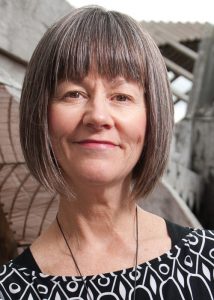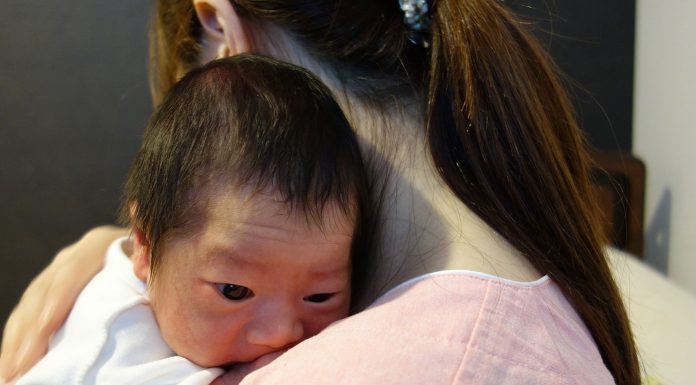Recruitment, retention and removing barriers were ‘the three Rs’ that reigned over much of outgoing Chief Nursing Officer Dr Jane O’Malley’s time. FIONA CASSIE talks to her about morale, management and moving on.
Jane O’Malley says she’s often been asked about the conflict of wearing her two hats – one as the country’s nurse leader and the other as chief nurse, answerable to the Government.

Her answer was that it simply isn’t that difficult. If you have the hard data at your fingertips and keep patients and consumers at the heart of all you do, then it is very easy to give ‘free, frank and fearless’ advice to a health minister or her CEO, she says.
As a chief nurse, O’Malley says she’s always been keen on using data to tell the story but that first required getting the data so she knew what story to tell.
She says former Director General Kevin Wood used to tell her to stop focusing so much on the workforce because they now had Health Workforce New Zealand (HWNZ) to do that task. Her response was that she didn’t want people some time in the future facing a nursing shortfall to look back at her time and ask “so what was the chief nurse doing?”.
With concern rising about the ageing nursing workforce, getting a good grasp of where the nursing workforce was at was a high priority for O’Malley when she walked into the Office of the Chief Nursing Officer (OCNO) in late 2010.
Recruitment: ACE and the ‘ageing’ workforce
At the start of the decade, nursing turnover had fallen – an international phenomenon as nurses stepped up hours, put off retiring or returned to the workforce as the global financial crisis hit their families’ livelihoods. At the same time, anecdotal reports of new graduates struggling to find work started to emerge.
But when then Health Minister Tony Ryall asked O’Malley a question (which she says he did a lot) about whether new graduate nurses were getting jobs, she, shamefaced, had to answer that they just didn’t know.
At that time the OCNO had to wait a whole year until new graduates renewed their APCs with the Nursing Council to get an accurate picture of employment rates, or wait three months after graduation for partial information when the NETS (Nursing Education in the Tertiary Sector) graduate destination survey results arrived.
Getting better new graduate job data quickly went to the top of the list for the new chief nurse, leading to nursing in 2012 adopting medicine’s ACE one-stop-shop clearing-house system for new graduate job placements.
“Now we have a good five to six years of strong data about the new graduates applying through ACE, their specialty preferences and their regional preferences,” says O’Malley.
They also know that, despite people’s ongoing concerns that only 50–60 per cent of applicants get jobs in the ‘first flush’, within five months 60–70 per cent will have nursing jobs and by the end of 12 months only around 3–5 per cent are still job-hunting.
Thanks to work done by her then advisor Dr Paul Watson, the office also had data on the skill mix and turnover of the nursing workforce in DHBs and knew that the largely experienced DHB workforce had the capacity to replace experienced staff nurses with new graduates from the ACE talent pool.
O’Malley says HWNZ analyst manager Emmanuel Jo recently presented her with a graph that shows the nursing workforce now has a “dip in the middle” between the new generation of young nurses and the ageing generation of nurses nearing the end stages of their career.
“The concern when we first started this work was that the young weren’t coming in, but what we are seeing is a nice wave of our new graduates steadily coming in each year.”
Based on that data trend, Jo was predicting a steady number of nurses across the age spectrum into the future.
“So the ageing workforce people were worrying about is now going to be a ‘youthening of workforce’ over the years, if we continue to do what we are doing at the moment. So that’s really good.”
ACE and Nursing Council statistics are also showing that 86–88 per cent of nurses gaining places in either of the new graduate programmes are still nursing five years on. It’s some encouraging news on which to end her term.
Retention: safe staffing and the slow adoption of CCDM
But the news has not always been good about nursing over the past near-decade. Nurses are often reported feeling under the pump as patients get sicker, bed turnover faster and budgets tighter.
So retention has been another one of the ‘three Rs’ that has preoccupied her time, with much of the focus being on ensuring good working conditions, in particular safe staffing.
O’Malley’s own career has been closely aligned with safe staffing. She was president of the NZNO when the 2004 historic ‘pay jolt’ deal for DHB nurses set up the Safe Staffing Healthy Workplace (SSHW) Inquiry.
She was also director of nursing for one of the early SSHW demonstration sites, the West Coast DHB, and a member of the SSHW Unit governance group, which oversaw the development of the acuity-based, safe staffing suite of tools known as CCDM (Care Capacity Demand Management).
But she admits the pace of rolling out CCDM across DHBs has been so slow and so fragmented that it risked putting the whole programme under threat.
“Nurses might be tempted to say CCDM doesn’t work. And chief executives might fail to realise the potential for CCDM to impact on patient and staff outcomes and actually improve hospital productivity if they don’t see the full scale roll-out.”
So it was great news to her, and one of her career highlights, that late last year the DHB chief executives agreed that the national rollout of CCDM will be “over the line” across all 20 DHBs by July 2021.
She emphasises that ‘over the line’ means not only introducing the tools, but DHBs also building into their budgets the funding to boost nursing numbers if CCDM analysis reveals that a ward or unit is understaffed to meet patient demand.
O’Malley acknowledges that CCDM at the moment is very much focused on DHB inpatient settings “but it’s a good place to start”.
The national rollout will also provide good national data and O’Malley reiterates that it is good data that should be driving decisions about workforce and skill mix.
“If we know we have a need for care, we must staff for it,” she says.
While supporting specialist and advanced nursing practice, O’Malley is also a champion of the generalist nurse working to the fullest extent of their scope. Generalism is a nursing attribute that comes to the fore in a CCDM environment, which encourages wards to plan and be ready to transfer or receive a nurse if a crisis arises.
“The truth is that registered nurses (RNs) are generalists – they can move from one ward to another and not do the specialist part of nursing in that ward but the generalist part,” says O’Malley.
In addition, she says that more care could be provided by enrolled nurses (ENs) – a workforce she believes could easily be grown to support RNs – and some by healthcare assistants (HCAs).
“We have to be ready to look at our own practices rather than always blame the funding, or the operations manager,” says O’Malley. “My challenge to registered nurses would also be to not assume that all that care needs to be RN care.”
Removal of barriers: prescribing and law changes
The third ‘R’ – removing legal barriers to practice that were creating ‘road blocks’, particularly for nurse practitioners, but also RNs and other health practitioners with advanced skill sets – was another major ongoing task for O’Malley’s office.
Pulling together an omnibus law to amend and remove ‘doctor’ and ‘medical practitioner’ from eight Acts where other suitably qualified practitioners could now safely carry out the roles was a complex and convoluted process. But O’Malley says the triumvirate of Alison Hussey (OCNO), Mary Louise Hannah (HWNZ), and legal advisor Jane Hubbard successfully shepherded the bill through and the amended Acts were finally enacted on 31 January this year.
Under O’Malley’s watch the Nursing Council and Government also brought in two new levels of registered nurse prescribing, amended standing orders regulations and tweaked a number of other regulations to ease the way for nurse practitioners.
Nursing leadership – particularly under the DHBs – is another area that has been in the spotlight during O’Malley’s watch.
“I’ve heard people saying that nursing leadership is under pressure and restructuring is taking out nurse leaders,” she says. “I’ve actually looked at the last five DHB restructures and I can’t see evidence that nursing has been restructured out of the decision-making.”
During her behind-the-scenes discussions with chief executives over restructuring, she says the CEOs “really listened” and while restructuring is stressful and some nursing leaders have gone, others have been appointed to take their places.
She also can’t see evidence that nursing clinical advice is not being listened to – though she acknowledges “you will have pockets of it”.
Morale, frustrations and rewards
What about the toughest and most difficult-to-measure test of her tenure – how has nursing morale changed in the time she has been the country’s chief nurse?
“I don’t think morale is any worse or better than it was seven years ago … I’m an optimist,” says O’Malley. “I always think it’s not bad but it could be better.”
“I think if we utilise nurses well; if we make sure that we deliver them predictable workloads that allow them to do the work they need to do for patients; if we make sure that every nurse is accountable for their practice in an environment where they are free to make good decisions; and if we value people as people and give them time to grow, then we will always get better patient and nurse outcomes.”
O’Malley leaves the Ministry – a place in which it has been a pleasure to work, she says, as there are so many intellectually smart people with a passion for health in one space – in March to become Plunket’s first chief nurse. Will she leave any frustrations and regrets behind her?
“There’s always frustration and always more that you could do.”
Only time will tell whether people will look back at her time and ask “what was the chief nurse doing?”. Jane O’Malley leaves knowing that she did a lot.























Good work Jane; the Chief Nurse did a great deal!